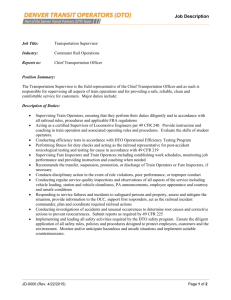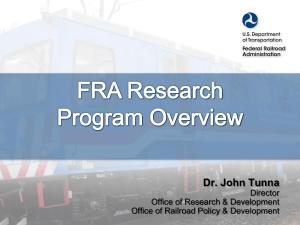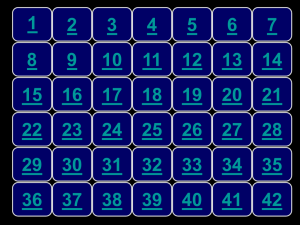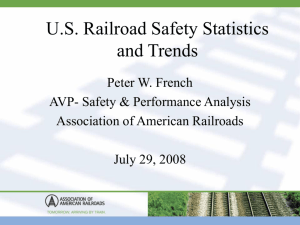Briefing-a-Case
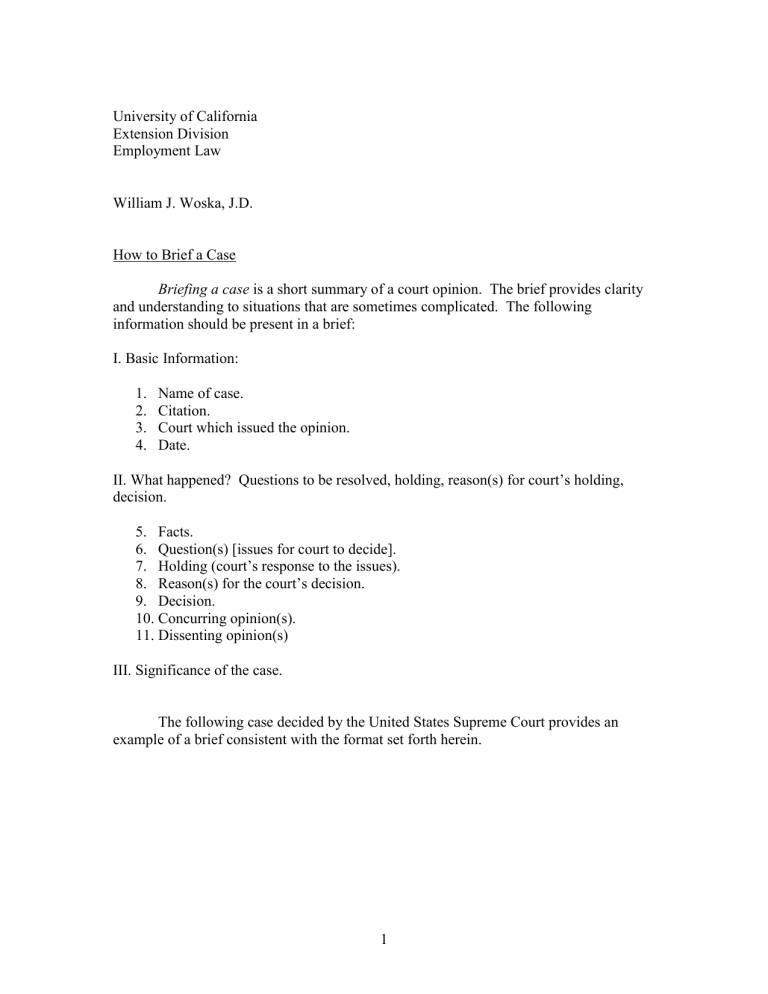
University of California
Extension Division
Employment Law
William J. Woska, J.D.
How to Brief a Case
Briefing a case is a short summary of a court opinion. The brief provides clarity and understanding to situations that are sometimes complicated. The following information should be present in a brief:
I. Basic Information:
1.
Name of case.
2.
Citation.
3.
Court which issued the opinion.
4.
Date.
II. What happened? Questions to be resolved, holding, reason(s) for court’s holding, decision.
5.
Facts.
6.
Question(s) [issues for court to decide].
7.
Holding (court’s response to the issues).
8.
Reason(s) for the court’s decision.
9.
Decision.
10.
Concurring opinion(s).
11.
Dissenting opinion(s)
III. Significance of the case.
The following case decided by the United States Supreme Court provides an example of a brief consistent with the format set forth herein.
1
Example of a Completed Brief
(1)
Skinner v. Railway Labor Executives’ Ass’n
(2) 489 U.S. 102, 109 S.Ct. 1402, 103 L.Ed.2d 639
(3) United States Supreme Court
(4) 1989
(5) Facts: In 1970, Congress passed and the President signed into law the Federal
Railroad Safety Act (FRSA). The FRSA authorizes the Secretary of Transportation to
“ . . . prescribe, as necessary, appropriate rules, regulations, orders, and standards for all areas of railroad safety.” The Federal Railroad Administration (FRA) concluded that safety is endangered by alcohol and drug abuse by railroad employees. As a result, the
FRA issued regulations that “ . . . mandate blood and urine tests of railroad employees who are involved in certain train accidents.” In addition, the FRA issued regulations
“ . . . that do not require, but do authorize, railroads to administer breath and urine testes to employees who violate certain safety rules.” Subsections C and D of the regulations issued by the FRA pertaining to breath, blood, and urine tests were challenged in court.
Plaintiff’s argued that the testing mandated under the FRA’s regulations violated the
Fourth Amendment of the United States Constitution. The Fourth Amendment prohibits the government from conducting unreasonable searches and seizures. The Court of
Appeals ruled that subsections C and D of the regulations issued by the FRA violated the
Fourth Amendment. In their ruling, the Court of Appeals held that the testing requirements were not reasonable in relation to the government’s objectives that support them, as required under the Fourth Amendment.
(6) Issue: Are the alcohol and drug testing requirements mandated under subsections
C and D of the regulations issued by the FRA reasonable under the Fourth Amendment?
(7) Holding: Yes.
(8) Reasons for the Court’s decision In most cases a warrant and probable-cause are necessary in order for the government to conduct a search and seizure. However, the
Court held that the FRA’s interest in regulating the conduct of railroad employees to ensure safety “ . . . presents special needs’ beyond normal law enforcement that may justify departures from the usual warrant and probable-cause requirements.”
With regards to the testing of railroad employees, the Court stated that the need to obtain a warrant may be ignored because “both the circumstances justifying toxicological testing and the permissible limits of such intrusions are defined narrowly and specifically in the regulations that authorize them, and doubtless are well known to covered employees.” The Court believes that the standardized and regulated nature of the testing
2
will prevent abuse from occurring. Also, the Court held that the need for a warrant may be ignored when “the burden of obtaining a warrant is likely to frustrate the governmental purpose behind the search.” Here, the Court believes, the government’s need to ensure safety supersedes the requirement of having to obtain a warrant.
The Court also held that in certain circumstances the need to have probable cause
can be ignored as well. The majority stated that “In limited circumstances, where the
privacy interests implicated by the search are minimal, and where an important governmental interest furthered by the intrusion would be placed in jeopardy by a requirement of individualized suspicion, a search may be reasonable despite the absence
of such suspicion.” In the Court’s opinion, privacy intrusions suffered by the railroad employees are minimal under the testing requirement under the regulations issued by the
FRA. Also, the need for the government to ensure safety supersede the need to have probable cause in order to test the railroad employees.
The Court makes an important point in noting that the testing requirements of subsection C and D have a strong deterrent effect upon railroad employees who may be considering drinking and using drugs while on the job. In their ruling, the Court stated:
”By ensuring that employees in safety-sensitive positions knew they will be tested upon the occurrence of a triggering event, the timing of which no employee can predict with certainty, the regulations significantly increase the deterrent effect of the administrative penalties associated with the prohibited conduct, concomitantly increasing the likelihood that employees will forgo using drugs or alcohol while subject to being called for duty.”
(9) Decision: The Court concluded that the need for the government to ensure safety on the railroads would be greatly hindered if they were required to obtain a warrant and to have probable cause in order to test an employee. The testing mandated under sub- sections C and D is not an undue infringement upon the privacy of railroad employees.
The government’s interest in ensuring safety supersedes the privacy rights of railroad
Employees. The testing is reasonable under the Fourth Amendment of the United
States Constitution.
(10) Concurring opinion: Justice Stevens.
(11) Dissenting opinion(s): Justices Marshall and Brennan. “. . . the majority ignores the text and doctrinal history of the Fourth Amendment, which require that highly intrusive searches of this type be based on probable cause, not on the evanescent costbenefit calculations of agencies or judges.” It is wrong to test all employees following an accident even though there is no evidence of substance use.
3
Significance of the Case:
A warrant and probable cause are not required under the Fourth Amendment to conduct searches (drug and alcohol) following a triggering event (railroad accident).
4



